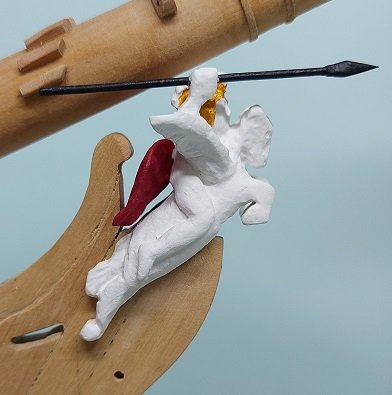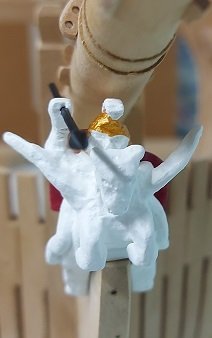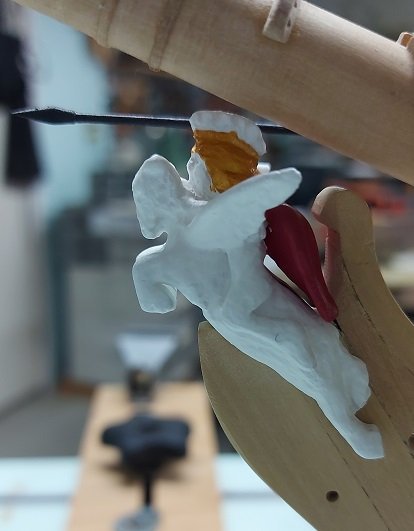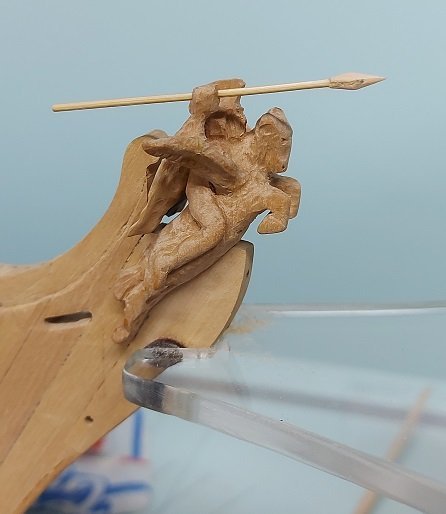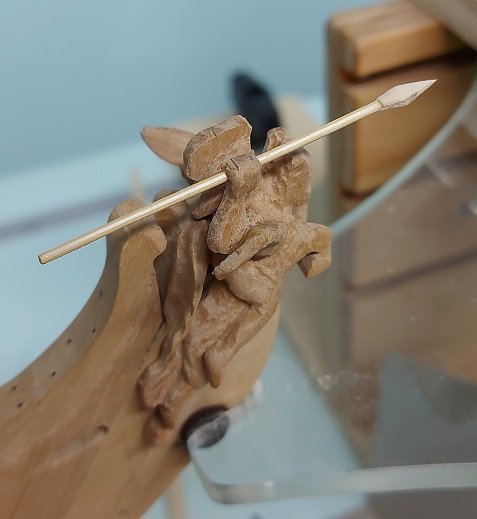-
Posts
2,772 -
Joined
-
Last visited
Content Type
Profiles
Forums
Gallery
Events
Everything posted by AON
-
Try a black permanent marker. Check that it doesn't rub off with your finger.
-
I've found that LOS does not seem to react with brass. Bill wrote that it takes a long time. If so it takes much longer than I am willing to wait. It works extremely well with copper.
-
Very impressive work Derek. Can't wait for the day I can come over and see it, or we get back to club face to face meetings and your bring it in to show! The one schooner I rigged (my first and only involved rigging to date) was quite relaxing work.... although I found the ratlines to become a bit tedious after a short while.
-
I make a scrapper and scrape the rabbet groove in. I was told to use an old metal saw blade. Heat it cherry red with a torch to soften (anneal) it (quench in cold water), and then file the desired shape into it.
-
temporary spacers!?!? of course not. Once I had all the aft and dead flat frames in I was going to check the fairness and make adjustments, then put in permanent chocks near the head of the top timbers, above and below the chocks where I can, and above and below each gun port location to lock everything before sanding inboard and outboard. That should only take me forever and two days since I operate at the speed of dark. 😁 .... temporary spacers .... 🤔 hmmmmm. there is a simple answer for everything.
-
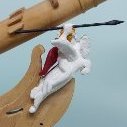
Were can I get this clamping device
AON replied to Cablejim's topic in Modeling tools and Workshop Equipment
cablejim I cannot see the image, only the path to your android device. could you please re-post it Thanks -
those are good vise use practises I hope to remember!
- 1,074 replies
-
Join the meeting on Sunday at 1:15 and you can ask him directly. I have silkspan here and my sail I made at the seminar that I can show you. I can drive over and you can look at it at a safe distance from me in your driveway. Just give me a date and time. The material reminds me of what they use for teabags and is more appropriate for the reduced scale.
-
Derek, I just tell myself what that masters do is all smoke and mirrors... then I try. Sometimes after a day or two I convince myself I can do better and try again. Usually I am right. Possibly because I learnt something valuable the first time and after pondering on it for that day or two I envisioned what I might try the second time. I believe that drive to try again is what made those masters. Never give up and don't sell yourself short. We all have it in us if we just try.
-
Where did you get those spring clamps? They look very useful.
- 321 replies
-
- Finished
- Flower-class
-
(and 1 more)
Tagged with:
-
Excellent video as always! However you gave me a fright having your fingers that close to the cutting blade! Might I suggest you consider a small piece of wood with a lip on it to hold the item down and will allow you to push the item to to fence at the same time. I put a dowel handle extension (goes 90° to the fence) on my tool. I almost lost a finger when the wood I was cutting flipped over and pulled my hand into the blade. Now my hands never get near the blade.
- 1,074 replies
-
I just used similar rotary cutters for my figurehead. My rotary driver was my 25 year old Dremel tool and flex cable. The cable needs to be disassembled occasionally and greased. You need to keep control of the tool as it sometimes wants to climb away! So take small controlled bites off the work. I found the cutters with spaces between flutes removed material best. Smaller regular dremel style cutters worked great for tiny bites. I recommend them, but keep your scalpel, carving knives and micro chisels at the ready. It was my first successful time using them...as I just got the proper (spaced flute) cutter set. Prior to that it was a mess... for me. Others seem to have no problem.
-
Thank you Druxey. I was told to do the heads first and that was indeed the most difficult part. I kept going away and coming back to it. Taking off a little here and a little there. Even when I thought I was done I kept going back to them. They are not in anyway masterpieces but from 1 foot away they are okay. This was not my first attempt. I've been at this on and off for almost 3 years. I suppose "on and off" should be my motto. There is one local fellow I could have commissioned and it would be a masterpiece but then it wouldn't be mine.
-
This is the result of my efforts in recreating my interpretation of the description of the first figurehead that was destroyed in 1793 when she collided with HMS Majestic in a gale force storm. I am quite happy with it and do not believe there is another model of this ship in existence with this version of this famous ship's figurehead. I hope I've done it justice. WOOD: Block of Linden bass wood TOOLS: Rotary cutters, Dremel rotary tool with flex cable, carving knives, miniature chisels, scalpel, and various sand paper (80 Grit to Super Fine). FINISH PRIMER: Javelin - Black permanent marker Remainder - Waterbase Folkart GESSO Surface Prep WHITE: Bodies - Craft Smart White Acrylic Paint RED: Cloak - Craftsmart Cherry Cobbler Acrylic Paint GOLD: Helmet - Kingart Metallic Acrylic Gold BLACK: Javelin - Craft Smart Black Acrylic Paint SEALER: Everything - KRYLON Low Odour Clear Matte Spray Finish
About us
Modelshipworld - Advancing Ship Modeling through Research
SSL Secured
Your security is important for us so this Website is SSL-Secured
NRG Mailing Address
Nautical Research Guild
237 South Lincoln Street
Westmont IL, 60559-1917
Model Ship World ® and the MSW logo are Registered Trademarks, and belong to the Nautical Research Guild (United States Patent and Trademark Office: No. 6,929,264 & No. 6,929,274, registered Dec. 20, 2022)
Helpful Links
About the NRG
If you enjoy building ship models that are historically accurate as well as beautiful, then The Nautical Research Guild (NRG) is just right for you.
The Guild is a non-profit educational organization whose mission is to “Advance Ship Modeling Through Research”. We provide support to our members in their efforts to raise the quality of their model ships.
The Nautical Research Guild has published our world-renowned quarterly magazine, The Nautical Research Journal, since 1955. The pages of the Journal are full of articles by accomplished ship modelers who show you how they create those exquisite details on their models, and by maritime historians who show you the correct details to build. The Journal is available in both print and digital editions. Go to the NRG web site (www.thenrg.org) to download a complimentary digital copy of the Journal. The NRG also publishes plan sets, books and compilations of back issues of the Journal and the former Ships in Scale and Model Ship Builder magazines.





